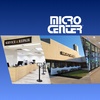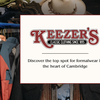Professor Van Dyke gave the third of his art lectures in the Jefferson Laboratory last night on the High Renaissance in Florence.
The time of the higher Renaissance in Florence, he said, was the sixteenth century. This was a period in which all Italy was undergoing a great change. For the first time since the fall of Rome Italians were beginning to feel an interest in science and philosophy, to look to reason rather than to religion for explanation and for truth. Still the age was in a way a religious age, though the religion was of the intellect rather than of the heart. But while the character of the race was rising from an intellectual point of view it was deteriorating as fast in morals. Every virtue was counterbalanced by some vice. It was at the same time the best and the worst of ages.
Art reflects always the ideas and feeling of the time. So, as we should expect, we find the art of this period in Florence is intellectual, perhaps somewhat dry. The work of the best artists of this time is in general harsh and severe. There are no soft color effects but the greatest productions are masterpieces of construction and line work. The coloring is usually far from pleasing, it seems even as if the artists had tried to give crude color effects as increasing the severity of the composition.
The first of the great masters of this time is Michael Angelo. He stands alone entirely distinct from all his contemporaries. His individuality was very strong and impresses itself into all his works. All his figures are of a somewhat gloomy type, but all are strong and majestic. He had none of the gentler or finer qualities essential to the painter, for he was not a painter, as he himself said, but a sculptor. He had a great command of line and was probably the most wonderful draughtsman that ever lived. His subjects are almost all religious. He had many followers but none of them could give what Michael Angelo did, that is the imprint of a strong individuality, and accordingly none of them amounted to much.
Raphael is the representative of classic art. This does not mean that his subjects or even his conceptions were Greek, although some of them were, but that his method was classic. Everything in his work blends with its surroundings. He was a harmonist, a unity of many things. He established no special element in the Renaissance but he put together the best of everything in an inimitable way. His one weakness was in brush work, but this fault was universal in all artists of the period.
Professor Van Dyke at the end of the lecture showed a number of stereopticon views of the works of Michael Angelo, Raphael and their followers.
Read more in News
Communications.












